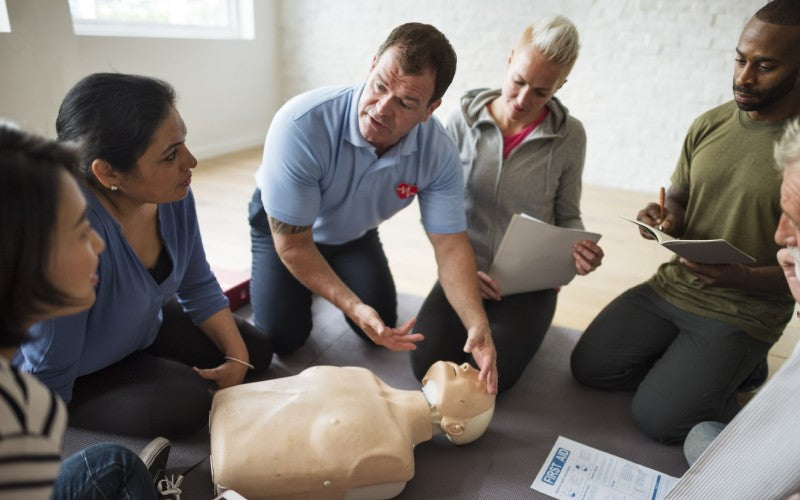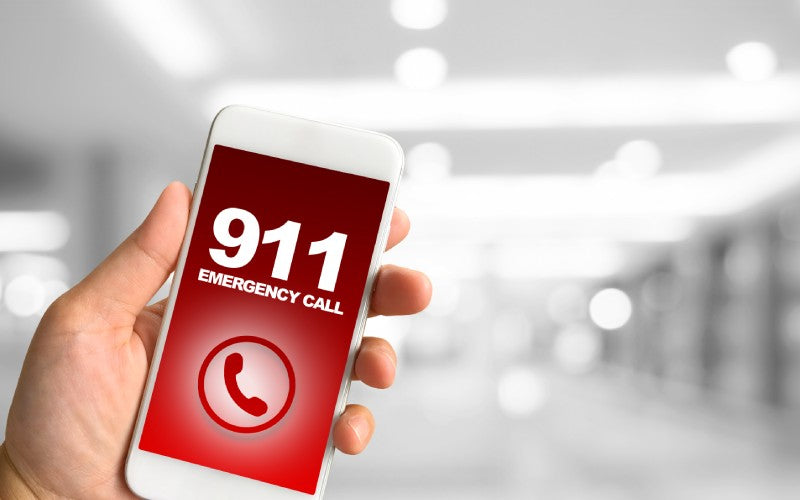Disasters and emergencies can strike at any time, and it is imperative for businesses to have a comprehensive, carefully considered emergency plan in place and communicated to all employees. This plan aims to protect the employees and assets of the business.
While the goal of occupational safety procedures and other precautions is to prevent emergencies, if one does happen, the emergency response plan kicks in to mitigate the losses and damages.
An emergency plan outlines the emergency procedures and protocols to follow in the event of a crisis or disaster. It helps a business prepare for various emergencies to ensure the safety of employees, clients, and assets. It also includes strategies to minimize the impact of emergencies and to facilitate emergency response.

Essential Components of an Emergency Response Plan
All components of the plan need to be documented. Procedures should be written clearly and concisely, and made readily accessible to all employees.
Hazard Assessment
Although there are many common emergencies, such as fires, that all businesses need to be prepared for, to have a comprehensive emergency response plan, you need to know all of the different situations you could face.
Start with a hazard assessment to identify all potential emergencies and unusual or additional complications. For example, note any hazardous materials that can contribute to the seriousness of a fire or other emergency.
When emergency planning, be sure to identify and consider all work locations that could be affected. If you have a mobile or remote workforce, the emergency response plan should consider how employees spread across a large area in their vehicles are impacted.
Emergency Response Team
Establishing and training an emergency response team responsible for executing the emergency plan is essential in emergency response plans. Roles and responsibilities need to be assigned, including leaders and alternates. This includes first aiders, fire wardens, and other key roles, whether for office buildings or higher-risk sites. An incident commander, who has overall responsibility for an emergency, including planning and preparation, needs to be identified.

Emergency Contacts
Emergency planning includes creating a list of emergency contact information for employees, emergency services, and other key numbers. The list is distributed to appropriate personnel only; personal or home contact information must be for emergency use only and kept confidential.
Communication Plan
A communication plan for notifying employees, emergency services, and stakeholders needs to be established, identifying primary and alternative communication methods. Provide equipment for an emergency communication system, such as handsets or mobile phones with preset phone numbers to key individuals.
Communication plans should include how to advise employees who are not currently in an affected facility but might travel to it, such as delivery drivers returning to a warehouse.
Procedures
Developing specific procedures for each identified potential emergency, tailored to each worksite and conditions, is a major part of planning. Create evacuation routes, assembly points, and other procedures for employees and visitors, ensuring the plan accounts for individuals with disabilities and special needs, or others who may need additional assistance. Consider evacuation chairs.
For severe weather events or an active shooter situation, shelter in place procedures must be developed. Identify secure locations in each facility or suitable locations for mobile employees.
Also consider emergency lighting, power sources, communication equipment, and other such factors during planning.
First Aid and Emergency Medical Services
Provide first aid training for designated personnel according to legislated requirements at a minimum or provide medical personnel. First aid supplies must be maintained and provided in a designated area.
Equipment and Resources
Certain emergency equipment, such as fire extinguishers, first aid kits, flashlights, batteries, communication devices must be provided. Employers that own designated public places should also have AEDs and emergency Oxygen installed. All equipment must be properly maintained and regularly inspected.

Training
Employees with designated roles, such as first aiders, must be provided training in their role. Regular training and drills to ensure that employees are familiar with emergency procedures is also needed, with reviews and updates to training materials being completed as needed.
Regulatory Compliance
Although emergency preparedness and response requirements vary by jurisdiction, in Canada, the various provincial occupational health and safety legislation or regulations require businesses to plan for emergencies.
In some cases, like in Alberta, BC, Manitoba, Newfoundland and Labrador, the Northwest Territories, Nunavut, Quebec, and Yukon, specific plans for responding to workplace emergencies are mandated. However, certain jurisdictions, such as Ontario, address the need for workplace emergency plans through general duty clauses, like Section 25 of the Ontario Occupational Health and Safety Act. Be aware of your relevant legislation, and stay informed of any changes.
Review Your Emergency Plan
Regularly review and update your emergency plan to reflect changes in your business, risks, and best practices, to make sure it is still current and effective. Conduct post-drill and post-incident reviews following drills to identify areas for improvement.
Examples of Emergencies
Businesses must consider a wide range of emergencies. Some will require evacuations, such as fires, while others will require sheltering in place, such as security threats or tornadoes. Different emergencies will require different responses, and can vary by location and many other factors.
Natural Disasters and weather emergencies like floods, ice storms, tornadoes, and wildfires will require procedures for evacuation, shelter, and resource management. Fire emergencies will require preparation for fire prevention and control, evacuation and exit routes, and collaboration with local fire departments.
For some businesses, a power outage or equipment failure is more critical than in others, but all businesses should prepare for these; the impacts should be detailed in the hazard assessment.
Situations like active shooters, terrorist threats, and civil disturbances will require security protocols and coordination with local law enforcement agencies.
In some emergencies, rescue procedures and specialty protocols may be required. This can involve safely extracting employees from a dangerous situation such as a confined space with a hazardous atmosphere, or assisting injured individuals. Both employee and emergency services involvement and roles need to be clarified.
This is not an exhaustive list. Each business has different risks, and there are many other potential situations, including pandemics, human injury events, and more.
Collaborating With Emergency Services
It's important to remember that an emergency response plan needs to be communicated to emergency services; if the plan does not tie in with these services, it could have disastrous circumstances. Businesses should establish clear lines of communication with these agencies to ensure swift response and coordination during emergencies. Ensure alarm systems are connected properly, and discuss how rescue operations could work.
Be sure to also notify the fire department and other key first responders of any hazards and hazardous materials on site that they need to be aware of when responding.






